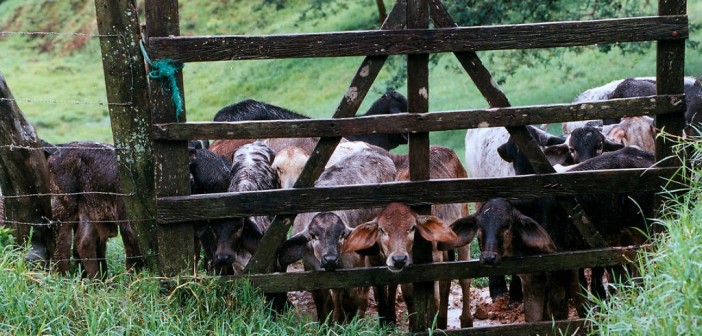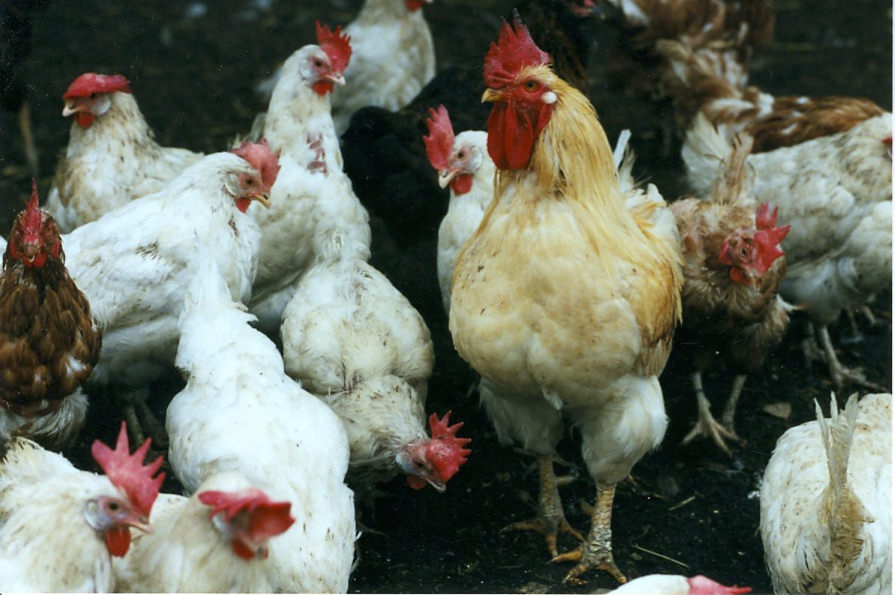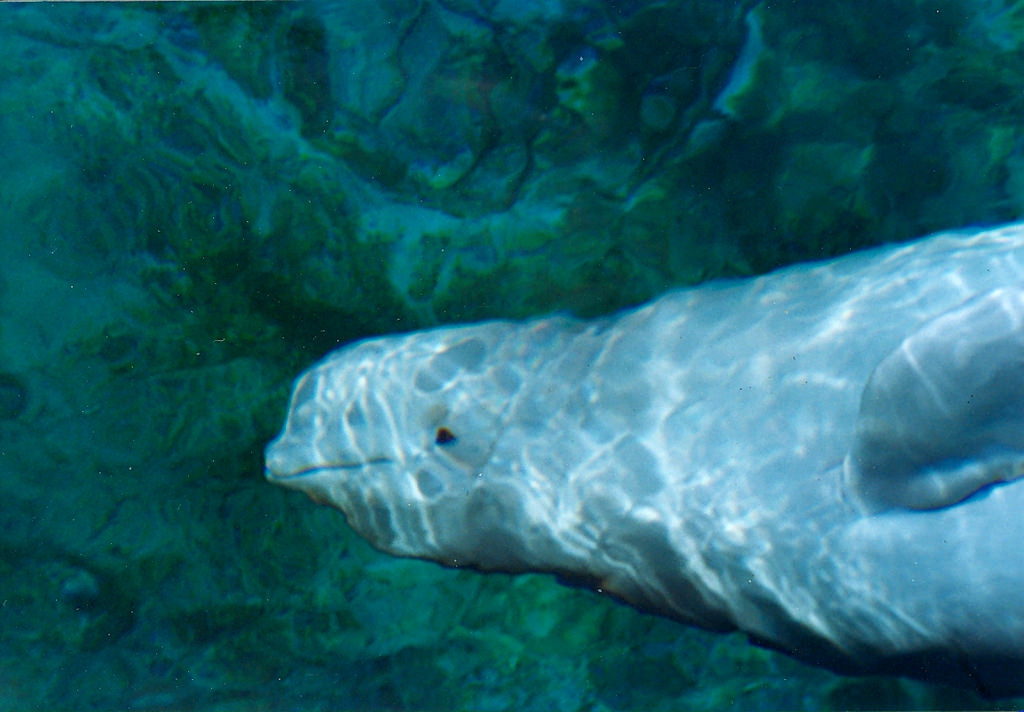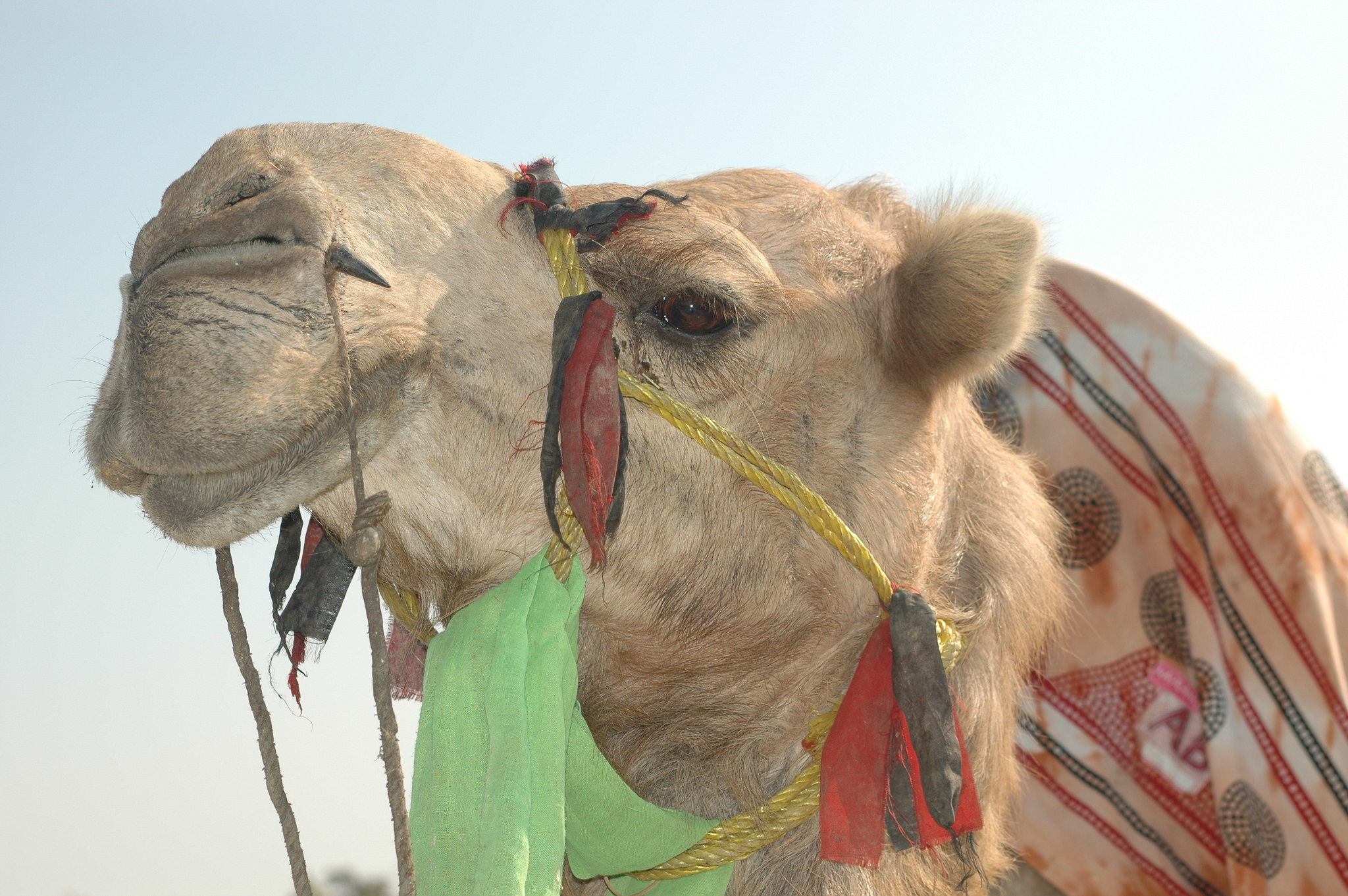(Originally published in Animal People News, January/February 2012)
“Politics of Animal Liberation” was the formal title of an ad hoc document prepared in 1987 by ANIMAL PEOPLE president Kim Bartlett, Animal Rights International founder Henry Spira, feminist theorist Marti Kheel, and others who formed an animal rights caucus at that year’s Green Party national convention. Spira, who died in 1989, Kheel, who died in November 2011, and Bartlett sought without success to win inclusion of the principles outlined in “Politics of Animal Liberation” in the U.S. Green Party platform.
Bartlett, then editor of the Animals’ Agenda magazine, subsequently published “Politics of Animal Liberation” in the magazine as a discussion document, but little discussion followed. Apparently not controversial with Animals’ Agenda readers, “Politics of Animal Liberation” was never formally presented to animal rights organizations for ratification. There has never actually been any mechanism through which the many different organizations representing what they perceive as the animal rights cause might have adopted a collective mission statement. Yet in the years since 1987, “Politics of Animal Liberation” has been extensively reprinted around the world by people on all sides of the issues as “The Animal Rights Agenda,” and remains widely accepted as such.
Many of the people who would have described themselves as radical animal rights advocates in 1987 have subsequently moderated (or compromised) their positions on some of the issues that “Politics of Animal Liberation” addressed. Some of the positions outlined in “Politics of Animal Liberation” require updates and clarification, in light of developments since 1987, and in recognition that some of the 1987 statements on ecological issues, especially, addressed specific topics of the time more directly than they addressed the longterm problems that these topics represented. In addition, new issues have emerged since 1987, worthy of inclusion.
But animal advocates are probably more agreed than ever in pursuit of some of the goals of “Politics of Animal Liberation,” then regarded as impossible and impractical by mainstream humane societies, yet now central to the work of many of them.
 “While there are certain points that I have come to reconsider,” Bartlett wrote recently to the Speaking of Research online forum, “such as the call for reintroduction of extirpated species, for the most part my philosophical views are the same now as they were in 1987. What came to be most controversial in the statement is the call for a cessation of the breeding of companion animals. Many animal rights advocates came to disavow that position. Personally I do not disavow it. In my opinion, breeding companion animals is an exploitation of animals, and the pet industry is fraught with cruelty. It is a good deed to adopt and care for animals who cannot fend for themselves because they are of a domesticated species or because they have been injured or debilitated in some way, but what is the point of breeding them for the pet industry except for profiteering or to perpetuate a ‘breed’ which is often a distortion of the animal as it evolved in nature?”
“While there are certain points that I have come to reconsider,” Bartlett wrote recently to the Speaking of Research online forum, “such as the call for reintroduction of extirpated species, for the most part my philosophical views are the same now as they were in 1987. What came to be most controversial in the statement is the call for a cessation of the breeding of companion animals. Many animal rights advocates came to disavow that position. Personally I do not disavow it. In my opinion, breeding companion animals is an exploitation of animals, and the pet industry is fraught with cruelty. It is a good deed to adopt and care for animals who cannot fend for themselves because they are of a domesticated species or because they have been injured or debilitated in some way, but what is the point of breeding them for the pet industry except for profiteering or to perpetuate a ‘breed’ which is often a distortion of the animal as it evolved in nature?”
Before proceeding to offer amendments to “Politics of Animal Liberation,” also known as “The Animal Rights Agenda,” a review of the original document is in order:
The original statement
- We are firmly committed to the eventual abolition by law of animal research, and call for an immediate prohibition of painful experiments and tests. The billions of dollars disbursed annually by the National Institutes of Health for animal experiments should be rechanneled into direct health care, preventive medicine, and biomedical research using non-animal tests and procedures. In addition, the government should fund projects to develop and promote non-animal technologies where they do not yet exist so that animal experiments may be rapidly phased out. In the meantime, procedural mechanisms must be established to allow for greater public scrutiny of all research using animals.
- The use of animals for cosmetics and household product testing, tobacco and alcohol testing, psychological testing, classroom demonstrations and dissection, and in weapons development or other warfare programs must be outlawed immediately.
- We encourage vegetarianism for ethical, ecological, and health reasons. As conversion of plant protein to animal flesh for human consumption is an energetically inefficient means of food production, a vegetarian diet allows for wiser use of the world’s limited food resources. Livestock production is a major source of environmental degradation. Furthermore, a shift in human diet from animal foods to plant food would result in a lower incidence of heart diseases and cancer and better health generally. Vegetarian meals should be made available at all public institutions including primary and secondary schools. Nutritional education programs currently managed by the Department of Agriculture should be handled by an agency charged with promoting public health rather than promoting the interests of agribusiness.
- Steps should be taken to begin phasing out intensive confinement systems of livestock production, also called factory farming, which causes severe physical and psychological suffering for the animals kept in overcrowded and unnatural conditions. As animal agriculture depletes and pollutes water and soil resources, and destroys forests and other ecosystems, we call for the eventual elimination of animal agriculture. In the meantime, the export of live farm animals for overseas slaughter must be regulated to ensure humane treatment. Livestock grazing on U.S. public lands should be immediately prohibited. Internationally, the U.S. should assist poorer countries in the development of locally-based, self-reliant agricultural systems.
- The use of herbicides, pesticides, and other toxic agricultural chemicals should be phased out. Predator control on public lands should be immediately outlawed and, in order to restore the balance of nature, steps should be taken to reintroduce native predators to areas from which they have been eradicated.
- Responsibility for enforcement of animal welfare legislation must be transferred from the Department of Agriculture to an agency created for the purpose of protecting animals and the environment.
- Commercial trapping and fur ranching should be eliminated. We call for an end to the use of furs while recognizing western society’s responsibility to support alternative livelihood for native peoples who now rely on trapping because of the colonial European and North American fur industries.
- Hunting, trapping, and fishing for sport should be prohibited. State and federal agencies should focus on preserving and re-establishing habitat for wild animals instead of practicing game species management for maximum sustainable yield. Where possible, native species, including predators, should be reintroduced to areas from which they have been eradicated. Protection of native animals and plants in their natural surroundings must be given priority over economic development plans. Further, drainage of wetlands and development of shore areas must be stopped immediately.
- Internationally, steps should be taken by the U.S. government to prevent further destruction of rain forests. Additionally, we call on the U.S. government to act aggressively to end international trade in wildlife and goods produced from exotic an/or endangered fauna or flora.
- We strongly discourage any further breeding of companion animals, including pedigreed or purebred dogs and cats. Spay and neuter clinics should be subsidized by state and municipal governments. Commerce in domestic and exotic animals for the pet trade should be abolished.
- We call for an end to the use of animals in entertainment and sports such as dog racing, dog and cock fighting, fox hunting, hare coursing, rodeos, circuses, and other spectacles and a critical reappraisal of the use of animals in quasi-educational institutions such as zoos and aquariums. These institutions, guided not by humane concerns but by market imperatives, often cruelly treat animals and act as agents of destruction for wild animals. In general, we believe that animals should be left in their appropriate environments in the wild, not showcased for entertainment purposes. Any animals held captive must have their psychological, behavioral, and social needs satisfied.
- Advances in biotechnology are posing a threat to the integrity of species, which may ultimately reduce all living beings to the level of patentable commodities. Genetic manipulation of species to produce transgenic animals must be prohibited.
Amendments
Since it is an unfortunate fact that some biomedical research, testing, training and education using animals will continue for the foreseeable future, item #1–pursuit of the eventual abolition by law of animal research–might be amended by making specific recommendations that could be accomplished in the short term.
There is a need for development of, and compulsory adherence to, a pain scale classifying the severity of pain inflicted on animals (from little or none up to severe). Experiments that would cause high degrees of unrelievable pain should be prohibited. Procedures on nonhuman animals that would be defined as torture by international conventions if performed on humans should be rejected on humanitarian grounds.
At an intermediate pain scale level, there should be a requirement of analgesia. Farther up the scale should be a requirement for both general anesthesia and post-procedure analgesia. Experiments inflicting trauma should be conducted with fully anesthetized animals, and if the procedures are designed to cause irrecoverable traumatic injury, animals should be euthanized (according to guidelines of the American Veterinary Medical Association) following the procedure and before regaining consciousness. Euthanasia of irremediably suffering animals should be performed without delay. Preventing suffering should be considered a major obligation.
The U.S. Animal Welfare Act definition of “animal” should be amended to include all vertebrate animals, with research funding agencies asked to establish guidelines to provide for the welfare of invertebrates (as an interim measure until the public is persuaded as to the sentience of invertebrates).
Item #2, seeking to outlaw the use of animals for cosmetics and household product testing, tobacco and alcohol testing, psychological testing, classroom demonstrations and dissection, and in weapons development or other warfare programs, has already been partially achieved within the European Union, India, and in several other scientifically and technologically advanced nations. The extent of progress achieved toward fulfilling this goal in nations which are among the global leaders in biotechnological research indicates that the rest of the goal can be reached too, especially with governmental commitments to do so.
Within the U.S., ironically, the supposedly more accountable public sector has made much less progress toward developing and implementing alternatives to animal testing than the corporate sector–led by Procter & Gamble, which for 27 years now has honored a 1984 agreement with “Politics of Animal Liberation” co-author Henry Spira to phase out animal testing as rapidly as alternatives can be developed and win regulatory approval.
Item #3, encouraging vegetarianism for ethical, ecological, and health reasons, has only gained urgency with the acceleration of global warming past the point which 25 years ago was regarded as a worst case scenario. Warned the United Nations Food & Agriculture Organization in a November 2006 report entitled Livestock’s Long Shadow–Environmental Issues and Options, “The environmental costs per unit of livestock production must be cut by one half, just to avoid the level of damage worsening.”
Again ironically, several mainstream environmental organizations now more prominently recommend eating less meat than some national humane organizations and most local humane societies–though most enviros still shy away from recommending vegetarianism or veganism. Mainstream environmental organizations have also become increasingly critical of factory farming, the topic of “Politics of Animal Liberation” item #4, because concentrated animal feeding operations, called CAFOs for short, are devastating to water and topsoil. Several mainstream environmental organizations were in 1987 actively engaged in trying to curtail livestock grazing on public lands, to protect wildlife habitat–and some of them still are.
But much of the environmental community–along with some animal welfarists–have taken a cruel and destructive wrong turn in pursuit of the item #4 recommendation that “the U.S. should assist poorer countries in the development of locally-based, self-reliant agricultural systems.”
Bartlett, Spira, and Kheel most certainly did not intend to endorse the approach of livestock gift charities, which persist in promoting animal agriculture in the very parts of the world that can least support animal husbandry, as detailed in the September 2011 ANIMAL PEOPLE editorial “Animal husbandry & the Horn of Africa famine.”
 Heifer International, the largest livestock gift charity, promotes a “zero grazing” approach which is in truth nothing more than factory farming scaled down to the village level, discussed at length in the October 2010 ANIMAL PEOPLE editorial “‘Zero grazing’ vs. the Five Freedoms.”
Heifer International, the largest livestock gift charity, promotes a “zero grazing” approach which is in truth nothing more than factory farming scaled down to the village level, discussed at length in the October 2010 ANIMAL PEOPLE editorial “‘Zero grazing’ vs. the Five Freedoms.”
A grant from Spira’s Animal Rights International funded the research behind the first extensive ANIMAL PEOPLE exposé of selling factory farming to the developing world in the name of “locally-based, self-reliant agricultural systems,” published in June 1997.
Neither did Bartlett, Spira, and Kheel in “Politics of Animal Liberation” mean to encourage a version of what is now called “locavorism” which makes a fetish of backyard slaughter, and of eating locally produced meat instead of a vegetarian diet which may have to be hauled farther to market, but nonetheless has hugely less environmental impact than meat consumption, and is not inherently exploitative and cruel toward animals.
The ad hoc nature of “Politics of Animal Liberation” is revealed in item #5, which lumped together several inherently unrelated goals.
The first of these, that the use of herbicides, pesticides, and other toxic agricultural chemicals should be phased out, overshot the objective by overstating the goal. The intent was to promote farming methods of low ecological impact, already advanced by wildlife advocates and advocates of agricultural reform for more than 50 years. The initial focus of the reformers was trying to change farming methods that caused deforestation and destruction of topsoil.
These concerns gained recognition after the Dustbowl debacle of the 1930s, but agricultural sprays succeeded twisters as the most widely recognized symbols of high-impact farming after Rachel Carson’s 1962 exposé Silent Spring became a controversial runaway best-seller. By 1987, a quarter century of further exposés and activism had forced most of the sprays that concerned Carson off the market or at least into severely restricted use. First generation pesticides that killed a broad spectrum of species and did not break down in the environment had already begun to be replaced by target-specific pesticides meant to break down completely after three days of sunlight.
Renewed concern about topsoil loss meanwhile brought the introduction of no-till cropping, which uses a one-time herbicide application rather than deep plowing to prepare fields for planting. Instead of broadcasting seeds to plant them, no-till cultivators use seed-drilling to insert pesticide-coated seeds into the soil at the appropriate depth to germinate. The seed coatings enable farmers to get larger crops with less planting. Though pesticide-dependent, no-till cropping has a fraction of the ecological impact of traditional plow-and-plant, and requires no more spraying than plow-and-plant to protect crops later in the growing cycle. Conversely, “organic” field crops can only be grown by plow-and-plant, while producing yields so much lower per acre that on average at least 10% more land must be cultivated and wildlife depredation must be aggressively resisted to produce the same amount of food.
The evolution of plant agriculture to have less impact on nature and wildlife is likely to continue for many more years. Meanwhile, what were believed to be the safest and most productive methods in 1937, 1962, and 1987 have long since been supplanted, a hint that prescribing specific here-and-now methods as inherently the best would be premature.
ANIMAL PEOPLE agrees with the “Politics of Animal Liberation” statement that “Predator control on public lands should be immediately outlawed.” Predator control often involves extraordinary cruelty, does enormous destruction to wildlife ecologies, and removes from the environment the strongest natural deterrent to overgrazing, short of mass livestock starvation due to degraded habitat.
But ANIMAL PEOPLE has become skeptical of the wisdom of active efforts to reintroduce native predators to areas from which they have been extirpated. Overlooked in celebrating the success of the reintroduction of wolves to Yellowstone National Park and the northern Rockies, for instance, is that–as ANIMAL PEOPLE pointed out at the time–wild wolves had already begun to reoccupy the region and were already within 50 miles of Yellowstone. All they needed, to effect recovery, was to be left alone, which could have been arranged without the decades of political posturing and confrontation that have brought the deaths of thousands of wolves in predator control and sport hunting, and have reinvigorated wolf hatred throughout the west.
Meanwhile, simultaneous with the forced reintroduction of wolves, pumas have made the most successful comeback of any once-extirpated large predator worldwide, reoccupying well over half the continental U.S. with only incidental controversy. What controversy has accompanied the puma recovery has mostly been associated with successful initiatives to ban puma hunting with hounds in California, Oregon, and Washington, and subsequent efforts by houndsmen to repeal the prohibitions.
ANIMAL PEOPLE continues to endorse the premise of “Politics of Animal Liberation” item #6, that responsibility for enforcement of [federal]animal welfare legislation in the U.S. should be transferred from the USDA Animal & Plant Health Inspection Service to an agency created for the purpose of protecting animals and habitat. Such an agency should also incorporate the law enforcement work of the U.S. Fish & Wildlife Service and the U.S. Forest Service. Most law enforcement agencies at most levels of government are separated from non-law enforcement missions, to avoid institutional conflicts of interest. There is no reason why animal and habitat-related law enforcement should be handled in a different manner. ANIMAL PEOPLE would extend this recommendation to reorganizing animal-related federal law enforcement in other nations too, as the problem of institutional conflicts of interest in animal-related law enforcement occurs worldwide.
The seventh “Politics of Animal Liberation” item, that commercial trapping and fur ranching should be eliminated, incorporated a restatement of the then often stated fallacy–which many activists at the time believed–that there are “native peoples who now rely on trapping.” As of 1987, at the height of North American trapped fur revenue, indigenous people in Canada accounted for 8% of Canadian trapped fur sales, and were paid just 5% of the money received by trappers for pelts. This was a minor source of indigenous Canadian income. No other nation had even that much indigenous involvement in the fur trade. It is questionable that fur trapping has any significant economic value to indigenous people now, apart from the subsidies that the Canadian government pays to native trappers and sealers to maintain the fiction that indigenous participation is central to the commercial fur and sealing industries. However, indigenous people are still far from getting their fair share of the jobs and other benefits accruing from energy, communications, and transportation development, especially in the Far North, and it is still a moral imperative to deal them in.
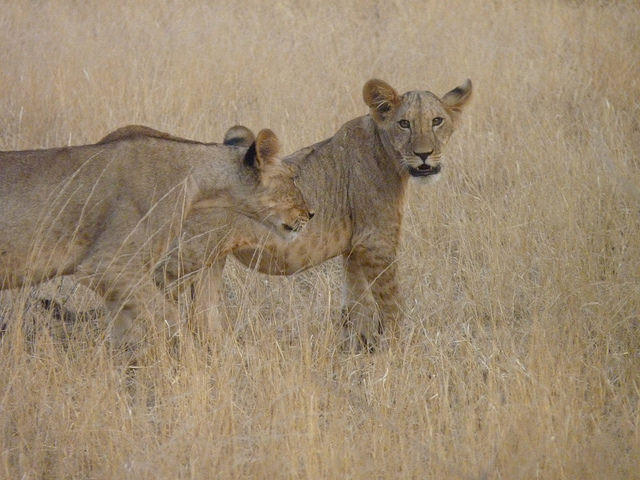 Like “Politics of Animal Liberation” item #5, item #8 lumped together several inherently unrelated issues. ANIMAL PEOPLE continues to advocate the abolition of sport hunting, trapping, and fishing, albeit recognizing that these practices are unlikely to be abolished by law before they have been all but abandoned by participants. The good news is that while the hunting, trapping, and fishing lobbies remain as powerful as ever, hunting and trapping participation have dropped to less than half of the 1987 level, and fishing participation fell by more than 15% just in the first five years of the 21st century. ANIMAL PEOPLE also agrees that state and federal wildlife agencies should focus on preserving and re-establishing habitat for wild animals, instead of practicing game species management for maximum sustainable yield–and, in recognition that interest in nonlethal wildlife observation has grown even more rapidly than participation in blood sports has declined, some wildlife agencies have began to take a similar view. But, as already outlined, ANIMAL PEOPLE has become skeptical of forced reintroductions of extirpated species.
Like “Politics of Animal Liberation” item #5, item #8 lumped together several inherently unrelated issues. ANIMAL PEOPLE continues to advocate the abolition of sport hunting, trapping, and fishing, albeit recognizing that these practices are unlikely to be abolished by law before they have been all but abandoned by participants. The good news is that while the hunting, trapping, and fishing lobbies remain as powerful as ever, hunting and trapping participation have dropped to less than half of the 1987 level, and fishing participation fell by more than 15% just in the first five years of the 21st century. ANIMAL PEOPLE also agrees that state and federal wildlife agencies should focus on preserving and re-establishing habitat for wild animals, instead of practicing game species management for maximum sustainable yield–and, in recognition that interest in nonlethal wildlife observation has grown even more rapidly than participation in blood sports has declined, some wildlife agencies have began to take a similar view. But, as already outlined, ANIMAL PEOPLE has become skeptical of forced reintroductions of extirpated species.
Giving priority to protection of native animals and plants in their natural surroundings, over economic development, has been central to enforcement of the critical habitat provisions of the U.S. Endangered Species Act ever since it was adopted in 1973, and is also incorporated into the wildlife protection laws of many other nations. Whether this approach has effectively protected much wildlife habitat, however, may be questioned, as proponents of development have often found ways to proceed despite the intent of the legislation, after legal and political wars of attrition which frequently build resistance to the whole notion of habitat protection.
ANIMAL PEOPLE believes that while habitat protection is a worthy goal, an even more worthy and more urgent goal is increasing appreciation and tolerance of wildlife everywhere, including successfully adapted feral species. More animals and more species are better served if they are welcomed wherever they are found than by confining them to limited reserves and allowing them to be killed if they wander out. Waging war on non-native species, meanwhile, usually done in the name of “protecting” biodiversity, is actually waging war on both biodiversity and the process of evolution.
The context of the concluding sentence of “Politics of Animal Liberation” item #8, seeking to stop drainage of wetlands and development of shore areas, has largely been lost in the ensuing two and a half decades of regulation and litigation involving increasingly intricate definitions of what wetlands and shore areas are, especially after climate change alters the characteristics of particular properties. The intent of the sentence was simply to ensure that economic development should respect wildlife habitat. This was also the intent of the first sentence of “Politics of Animal Liberation” item #9, that internationally, steps should be taken by the U.S. government to prevent further destruction of rain forests. Item #9 continued with what was in gist a call for stronger enforcement of the United Nations-brokered Convention on International Trade in Endangered Species. Though attention to protecting rain forests and interdicting the international wildlife traffic has been escalated repeatedly, with widespread global recognition of the need to curtail rain forest destruction and wildlife trafficking, both problems remain little abated.
Dogs & cats
Item #10 of “Politics of Animal Liberation,” strongly discouraging any further breeding of companion animals, including pedigreed or purebred dogs and cats, had become the policy of most major humane organizations by 1992, when ANIMAL PEOPLE debuted.
As the national pet sterilization rate soared over 70%, however, and numbers of dogs and cats killed in U.S. animal shelters plunged from 17.8 million in 1985 to 3.4 million in 2010, some humane societies have reforged alliances with fancy-breeders, in support of breed-specific rescuing and in opposition to puppy mills.
Such alliances can be problematic. As many recent puppy mill raids have demonstrated, a clear legal distinction between a fancy-breeder and a backyard breeder is often difficult to make. Under economic or other personal stresses, many onetime fancy-breeding operations degenerate into puppy mills.
This is not to point fingers at breeders alone. Under similar circumstances erstwhile rescuers often become animal hoarders. Breeders and failed rescuers have surrendered comparable numbers of neglected animals to law enforcement in recent years–but while failed rescuers frequently allow unwanted breeding to occur, by not getting all of the animals in their custody sterilized, only breeders are intentionally contributing more animals to the surplus.
Contrary to overly optimistic claims by advocates of no-kill sheltering, the U.S. still has a dog-and-cat overpopulation problem, albeit not the same problem of unwanted accidental litters born to household pets and “too many pets but not enough homes” that prevailed in 1987.
Currently, more than two-thirds of all the dogs arriving at U.S. shelters are either purebreds or pit bulls, who by themselves are about 30% of the incoming. As pit bulls do not breed true to type unless line-bred, these are deliberately manufactured dogs. Intentionally bred dogs who are surrendered to shelters have usually had at least three homes: their birth home, the home they were purchased to occupy, and a pass-along home before final abandonment, usually between the ages of one and two.
Other intentionally bred dogs now enjoy excellent chances of adoption, thanks in part to the work of breed-specific rescue networks. But as the October 2011 ANIMAL PEOPLE editorial “More adoptions will not end shelter killing of pit bulls” explained in depth and detail, the number of safe and stable homes for pit bulls in the U.S. appears to be barely half of the total number of pit bulls at any given time. Despite unprecedented efforts to rehabilitate and rehome pit bulls, and despite rehoming more pit bulls than any other breed type, shelters have killed nearly a third of the U.S. pit bull population in each and every year for the past 10 years.
Most other nations do not share the U.S. pit bull surplus, but most do still have many times more dogs than good adoptive homes for them. Adopting dogs from abroad is an imperfect alternative to adopting locally, not least because it usually requires adopting dogs without prior acquaintance. As an alternative to purchasing a dog from a breeder, however, the difficulty and expense of adopting a dog from abroad at least inhibits impulse acquisitions, which all too often lead to equally impulsively dumping the dog.
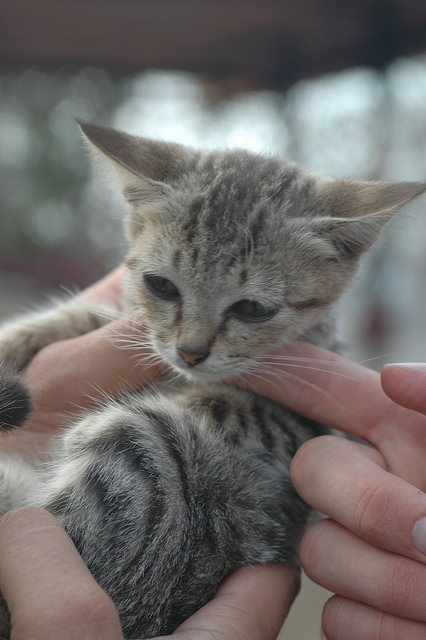 Cats, unlike dogs, are seldom deliberately bred. But a November 2011 Associated Press/Petside.com national survey showed that 52% of cat keepers have adopted a stray from at large and 43% have adopted a cat from a shelter. These numbers affirm that even though the U.S. feral cat population is down by two-thirds or more since 1987, there is still no shortage of feral kittens who can be trapped, socialized, sterilized, and successfully adopted into homes.
Cats, unlike dogs, are seldom deliberately bred. But a November 2011 Associated Press/Petside.com national survey showed that 52% of cat keepers have adopted a stray from at large and 43% have adopted a cat from a shelter. These numbers affirm that even though the U.S. feral cat population is down by two-thirds or more since 1987, there is still no shortage of feral kittens who can be trapped, socialized, sterilized, and successfully adopted into homes.
The “Politics of Animal Liberation” item #10 recommendation that “Spay and neuter clinics should be subsidized by state and municipal governments” has already been achieved in much of the U.S. through the combination of granting such clinics nonprofit status, contracting with them to sterilize shelter animals before adoption, and funding mechanisms including special license plates, allocating a portion of lottery proceeds, and surcharges on pet food and paraphernalia. There is at this point little remaining disagreement that sterilizing dogs and cats is in the long run much more cost-effective than the catch-and-kill approach to municipal animal control which prevailed in 1987.
The concluding recommendation of “Politics of Animal Liberation” item #10, that commerce in exotic animals for the pet trade should be abolished, is now partially accomplished at the local, state, and federal levels, with further legislation advancing in many jurisdictions to tighten the existing laws, in light of the exotic animal release and subsequent shootings in October 2011 near Zanesville, Ohio. (The November/December 2011 edition of ANIMAL PEOPLE featured coverage of the incident.)
“Politics of Animal Liberation” item #11 sought reinforcement of the existing prohibitions of dogfighting and cockfighting, which has been accomplished, though dogfighting and cockfighting continue perhaps more ubiquitously than at any time and place since Elizabethan England.
Item #11 also sought to halt fox hunting and hare coursing, which continue in Britain, where both were biggest, despite having been nominally outlawed for ten years. The newly elected Prime Minister David Cameron vowed to legalize fox hunting again, against the wishes of an overwhelming majority of Britons.
In addition, item #11 sought to extend societal disapproval of blood sports to greyhound racing, rodeos and circuses. Campaigns to ban circus acts using animals have been surprisingly victorious in many parts of the world (most especially Latin America) and the dark side of greyhound racing is being revealed by undercover exposes on several continents. Rodeos have lost some corporate sponsorship and a number of musical artists now refuse to entertain at rodeos, but little has been accomplished to make rodeo animal abuse illegal.
The “critical reappraisal of the use of animals in quasi-educational institutions such as zoos and aquariums” urged by “Politics of Animal Liberation” item #11 had already begun in 1987, involving both public response to zoos and aquariums, and zoo and aquarium industry re-examination of their mission. The process has included many billions of dollars’ worth of renovation and expansion of zoo and aquarium animal facilities, the closure of dozens of substandard zoos and aquariums, repeated reinforcement of zoo and aquarium self-regulation, increased regulation by governmental agencies, and the near cessation of capture from the wild as a mode of animal acquisition. Of note is that many of the most influential voices within the zoo and aquarium industry credit animal rights activism with helping to impel reforms which have made today’s best zoos and aquariums more popular than ever, while maintaining pressure on the rest to improve.
The concern expressed by “Politics of Animal Liberation” item #12 that “advances in biotechnology are posing a threat to the integrity of species” remains current, but the following recommendation that “genetic manipulation of species to produce transgenic animals must be prohibited” has been rendered obsolete by post-1987 advances in biotechnology which have often been beneficial to animals.
Emblematic of transgenic research as of 1987 were a veritable freak show of “experimental” creatures who abnormally glowed in the dark, had extra limbs and organs, and were otherwise so grotesquely dysfunctional as to be self-evidently suffering throughout their brief lives. Such demonstrations continue today, but mostly in the developing world, where they are an attention-getting device used by founders of young biotechnology projects in seeking foreign investment.
The mainstream of transgenic research long ago moved on to developing the most effective generation of vaccines yet, including the orally administered vaccines which have accomplished successful eradications of rabies from foxes, raccoons, and coyotes in much of North America and Europe; genetic therapies for various diseases; and purpose-engineered laboratory animals whose use in relatively smaller numbers decreases the overall numbers of animals used per experiment.
In this regard, it is essential to recognize two opposing trends. There are some indications that the number of animals used in experiments worldwide has increased since 1987, to about 115 million per year. This is partly because more nations are involved in biomedical research, and partly because of an explosion in the amount of genetic research being done.
The number of scientific articles published in medical journals worldwide, each article reporting the outcome of one or more experiments, soared from 400,000 in 1990 to 845,175 in 2009, according to the PubMed data base maintained by Stanford University. But, though the rise in the numbers of published scientific papers indicates that more animals are being used, whether there has actually been any increase in animal use is difficult to assess. U.S. researchers are not required to report how many rats, mice, and birds they use. Only 37 of the 142 nations known to have biomedical research industries formally track animal use at all.
The latest information available from the United Kingdom, which has the most detailed tracking requirements, shows that the numbers of animals used in experiments dropped for several years after 1992, returned to the 1992 volume in 2004, continued to rise through 2008, then dropped 10% in 2009 alone–the first year in which the numbers of genetically modified animals used in experiments exceeded the numbers who had not been modified.
Ideally we would like to see an end to all animal use in harmful experiments, but if such experiments are to be done, the use of a reduced number per experiment is clearly an improvement.
As in “Politics of Animal Liberation” item #1, the real issue raised by item #12 is whether the animals suffer, and the same principles of preventing suffering should apply.
An offshoot of transgenic research, incidentally, are efforts to produce cultured “meat,” which would be essentially the same material as the products of slaughter, but produced without raising and killing animals.
Among items worth adding to an “Animal Rights Agenda,” or any humane agenda:
- Eradicating rabies, and other eradicable zoonotic diseases, through vaccination drives modeled after the 1980 global eradication of smallpox. No disease produces more fear of animals, and more mistreatment, than rabies; yet no deadly disease is more amenable to prompt eradication, using existing technology. The September 2007 ANIMAL PEOPLE editorial “How to eradicate canine rabies in 10 years or less” pointed the way, as did “How to eradicate canine rabies: a perspective on historical efforts,” by ANIMAL PEOPLE editor Merritt Clifton, published in the August 2011 edition of the medical journal Asian Biomedicine.
- Encouraging the evolution of religion away from animal sacrifice and other rituals (such as bullfighting and its many variants) that harm animals. This is an especially sensitive recommendation to people in many parts of the world because of the extent to which religious ritual is intertwined with cultural and political self-definition. Even people who do not practice religious rites that harm animals are often reluctant to oppose them, out of concern for civil liberties or to avoid conflict with fellow religionists. In India, for instance, courts have for more than 50 years been sidestepping contradictory constitutional provisions which are commonly interpreted as both forbidding animal sacrifice (as cruelty to animals) and permitting it under a clause guaranteeing religious freedom. Religious rites involving harmful use of animals will probably have to be left behind by most practitioners before religious authorities unanimously accept that sacrificing or otherwise hurting animals should be considered a historical relic.
- Expanding appreciation of the ecological roles and value of feral wildlife, including recognition that climate change is transforming habitats so that introduced species may be the species that are best adapted to some locations, while some “native species” may be better adapted to somewhere else. Adaptive species should no longer be indiscriminately condemned as “invasive species.” Where introduced species are to be removed for some compelling reason, the removal should be done by methods which minimize animal suffering.
- Encouraging animal-friendly design of human infrastructure that minimizes deadly conflicts, such as road-building with attention toward preventing roadkills, and development of ways to prevent birds from colliding with microwave towers. Animal-friendly design also benefits humans, by better enabling wildlife to safely perform their natural roles in such capacities as pollinating crops, enabling forests to rejuvenate, and in controlling vegetation and members of rapidly reproducing prey species such as rodents.
- Introducing quality of life as a consideration in endangered species conservation. If the sole objective is just to preserve a gene pool, that can as easily be done in a test tube. The goal of endangered species conservation should be to enable endangered species to live in a natural manner, responding to normal natural challenges–not just living in a zoo or other zoo-like habitat, with no chance of return to the wild. Obviously this can more easily be done with small and out-of-the-way species than with species who have large habitat needs, such as elephants, lions, tigers, and great apes. But simply because it is relatively difficult for humans and wild species with large habitat needs to coexist does not mean that the effort to promote coexistence is futile or should be abandoned.
The recovery of North American pumas demonstrates that even some quite large and dangerous species can coexist among humans, as does the abundance of bears and deer in much suburban habitat, if humans mostly tolerate their presence. Thus item #18 on our updated agenda is encouraging tolerance of wildlife in all habitats, including developing and promoting nonlethal methods of averting or mitigating conflicts between humans and wild animals.
Tactics
 ANIMAL PEOPLE also deems appropriate the addition to the “Animal Rights Agenda” of a stipulation that arresting the cycle of violence in human affairs is of greater importance than the accomplishment of any single tactical objective–whether trying to stop the slaughter of animals for food, fur, sport, or religious rituals; addressing the scientific use of animals; or dealing with any other particular exploitation of animals. We enjoy the opportunity to address social injustices, inequities, and cruelties (toward animals, children, women, gay people, poor people, and racial and ethnic minorities) because we are privileged to live in a democratic society, which through the effort of generations of our forebears has (however tenuously at times) replaced the old paradigm of “might makes right” with respect for the rights of individuals, democratic process, public debate, freedom of expression, and divergent points of view. Part of our social contract as civilized people is that we agree to trust in the ability of our ideas to persuade, and to operate within established systems until they can be improved by peaceful means.
ANIMAL PEOPLE also deems appropriate the addition to the “Animal Rights Agenda” of a stipulation that arresting the cycle of violence in human affairs is of greater importance than the accomplishment of any single tactical objective–whether trying to stop the slaughter of animals for food, fur, sport, or religious rituals; addressing the scientific use of animals; or dealing with any other particular exploitation of animals. We enjoy the opportunity to address social injustices, inequities, and cruelties (toward animals, children, women, gay people, poor people, and racial and ethnic minorities) because we are privileged to live in a democratic society, which through the effort of generations of our forebears has (however tenuously at times) replaced the old paradigm of “might makes right” with respect for the rights of individuals, democratic process, public debate, freedom of expression, and divergent points of view. Part of our social contract as civilized people is that we agree to trust in the ability of our ideas to persuade, and to operate within established systems until they can be improved by peaceful means.
We believe that no principle should be more inviolable than the principle that violence–including psychological violence such as intimidation, the invasion of familial privacy, and engagement with persons not responsible for or directly involved in issues (such as relatives of parties with whom there is a dispute)–must never be employed as means to achieve moral progress and advance social change.
Protestors have the right to express dissent, rally, and even agitate in order to arouse public concern in the hope of prompting action, but demonstrations, rallies, and actions involving civil disobedience should be held at appropriate sites, such as public areas including shopping malls, universities, government buildings, or office buildings connected to the issues of concern.
ANIMAL PEOPLE readers may think of much else to add to this agenda. Like the 1987 draft of “Politics of Animal Liberation,” it is offered to encourage creative initiatives and inspire strategic thinking.
(All images from Animal People’s Flickr page)

